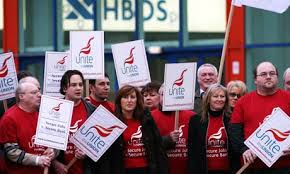 The latest trade union membership figures and statistics published by the Department of Business, Innovation & Skills (BIS) in its statistical bulletin shows union membership for 2014 in the UK is ‘broadly unchanged’ on the figures for 2013.
The latest trade union membership figures and statistics published by the Department of Business, Innovation & Skills (BIS) in its statistical bulletin shows union membership for 2014 in the UK is ‘broadly unchanged’ on the figures for 2013.
The report shows that 6.4 million employees in the UK are union members. “The level of overall union members was broadly unchanged from 2013, with a non-statistically significant reduction of only 40,000 over the year (a 0.6% decline)” says the bulletin.
The report shows that the numbers of UK employees increased between 2013 and 2014 so the proportion of employees who were union members fell slightly to 25.0% in 2014, from 25.6% in 2013.
One interesting statistic is that female employees are more likely to be union members with the proportion of female employees who are union members standing at 28% compared with 22% for male employees.
Another interesting statistic is that union membership in the private sector fell from 3.4 million in 1995 to 2.5 million in 2010, but the new 2014 data continued to show a reversal of this trend, with union membership levels in the private sector rising for the fourth consecutive year.
The report describes the increase of 38,000 in 2013 to 2.7 million as “non-statistically significant”.
A worrying trend is that older workers account for a larger proportion of union members than younger workers. 38% of trade union members were aged over 50 but just 28% of employees are in this age group, which shows that unions are still failing to reach out younger workers and the proportion of union members aged below 50 has fallen since 1995, whilst the proportion aged above 50 has increased.
Employees in ‘professional occupations’ are also more likely to be union members than other employees. Employees in the professional occupations account for 36% of union members, but only 20% of employees in the UK worked in these occupations.
The bulletin highlights the fact that middle-income earners are more likely to be trade union members, that employees in professional occupations are more likely to be trade union members.
Among the detailed analysis the BIS bulletin shows a number of other facts: UK born and black ethnic employees are more likely to be union members; “highly educated employees” are more likely to be union members and not surprisingly the bulletin says that “larger workplaces are more likely to negotiate pay through collective bargaining”.
Equally, employees in permanent jobs and full-time work are more likely to be union members.
The bulletin also states that employees with disabilities are more likely to be union members and that employees in the devolved countries and in the north of England more likely to be trade union members.
The trade union premium known as “trade union wage gap”, (defined as the percentage difference in average gross hourly earnings of union members compared with non-members), is 21.6% in the public sector and 8.1% in the private sector. This is an increase of 1.7 and 0.9 percentage points respectively when compared with 2013.
Which shows it pays to be in a union.
Read the full report by clicking here
